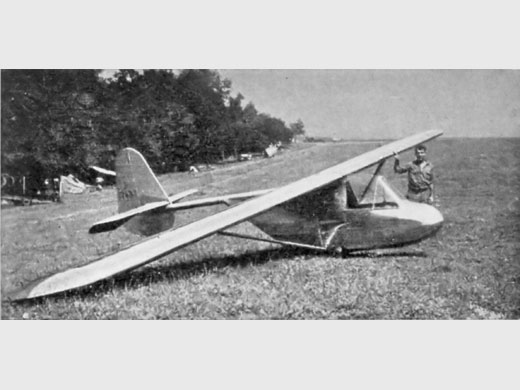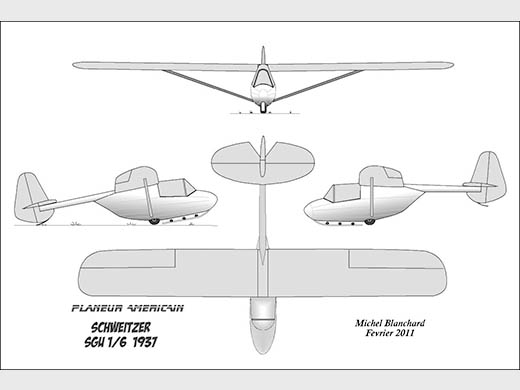
Schweizer SGU 1-06
| DONNÉES GÉNÉRALES |
| Année du premier vol (ou de design, si seul projet) |
1937 |
| Pays | USA |
| Designer(s) | SCHWEIZER, Ernst & SCHWEIZER, Paul |
| Premier constructeur | Schweizer Aircraft Company, Elmira |
| Type d'appareil | Planeur |
| Fonction | Performance |
| SPÉCIFICATIONS TECHNIQUES |
| Envergure | -- |
| Longueur | -- |
| Hauteur | -- |
| Allongement | -- |
| Surface alaire | -- |
| Profil aile | -- |
| Masse à vide | -- |
| Masse maxi | -- |
| Charge alaire | -- |
| Vitesse mini | -- |
| Vitesse maxi | -- |
| Finesse maxi | |
| Taux de chute mini | -- |
| Nb sièges | 1 |
| Structure | Construction entièrement métallique |
AUTRES INFORMATIONS
| Constructeur(s) |
| ||||||
| Infos techniques | The SGU was the first all-metal glider built. It was an unusual design with a high-mounted strut-braced wing and a tube-style boom ending in a cruciform tail. The design was intended to be simple and cheap to produce. | ||||||
| Histoire résumée | The sole SGU 1-6 built was completed in 1937 as an experimental aircraft and registered N17897. The design was never certified. Schweizer Aircraft started construction of the 1-6 prototype in 1937. The aircraft was built to compete in the Eaton Design Contest held in conjunction with the 8th US National Gliding Championships. This competition was open to any new American glider design that had not been flown at a previous National Championship. The rules required drawings and stress analysis data to be presented with the completed aircraft. The intention was that the winning design would be made available as drawings and kits for amateur construction and that Bureau of Air Commerce design approval would be eventually obtained as well.[1] The winners of the contest and the cash prizes won were:[1] * First - USD$700 - ABC Sailplane, Arthur B Schultz, designer * Second - USD$500 - RS-1 Sailplane, Harland Ross, designer * Third - USD$300 - SGU 1-6 Utility Glider, Ernst and Paul Schweizer, designers The SGU 1-6 was not actually flown in competition, despite being designed for the 1937 US Nationals and being present at the competition. The Schweizer brothers were all pilots of low experience in 1937 and had hoped to have a well-known pilot fly the 1-6 in the US Nationals. Top soaring pilot Jack O'Meara was attending the competition and did not have a sailplane to fly. The Schweizers offered O'Meara the use of the 1-6 for the contest, hoping that he would score well flying it and thus promote the design. O'Meara declined the loan of the 1-6, hoping to secure a higher performing aircraft instead, in more keeping with his status as a competitive pilot and so the 1-6 did not fly in the Nationals.[ A pris la 3ème place au championnat américain de vol à voile de 1937. | ||||||
| Liens personnalités | Pas de personnalité associée. |
SOURCES DOCUMENTAIRES
| Liens WEB | Site : Wikipedia (en) . Histoire. (2011-02-15 CL) |
| Livres | Der Segelflug im Wettbewerb der Völker par ZUERL, Hubert (1941) [p. 80. 1 photo]. |

Team J2mcL © 2003 -
- Pages optimisées pour Mozilla Firefox

